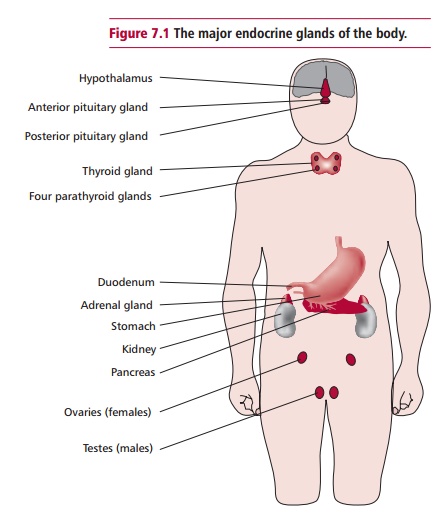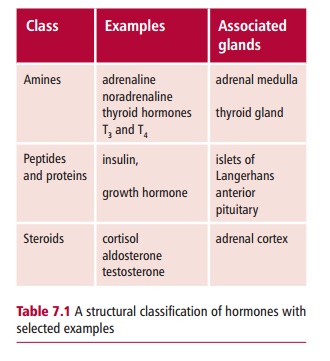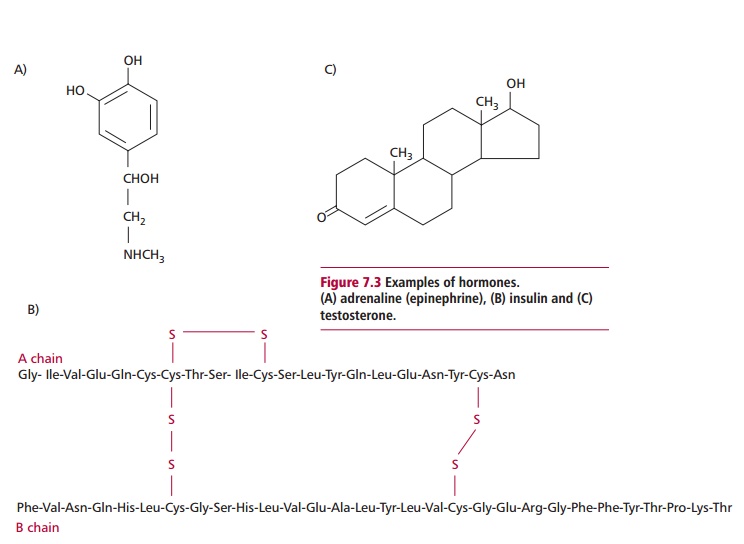Chapter: Biology of Disease: Disorders of the Endocrine System
Disorders of the Endocrine System
DISORDERS OF THE ENDOCRINE SYSTEM
INTRODUCTION
The endocrine system is one of two major control
systems in the body, the other being the nervous system, that help control the
activities of the body. It consists of a number of ductless glands (Figure 7.1) that produce hormones.
Hormones are molecules that circulate in the blood and excite or inhibit the
metabolic activity of target tissues or organs. These responses maintain and
regulate body functions, such as growth and development, responses to stress
and injury, reproduction, homeostasis and energy metabolism (Figure 7.2).


Hormones can be divided into three chemical groups:
amines, peptides and proteins, and steroids (Table 7.1). Many amine hormones, such as adrenaline (epinephrine)
and those produced by the thyroid gland, are derivatives of tyrosine. The
majority of hormones are peptides and proteins, examples being insulin and
growth hormone. A number of protein hormones, for example thyroid stimulating
hormone, are glycoproteins in that they have carbohydrate groups covalently
attached to them. All steroid hormones are derivatives of cholesterol and
include cortisol and testosterone. Figure
7.3 shows examples of each type of hormones.


Related Topics